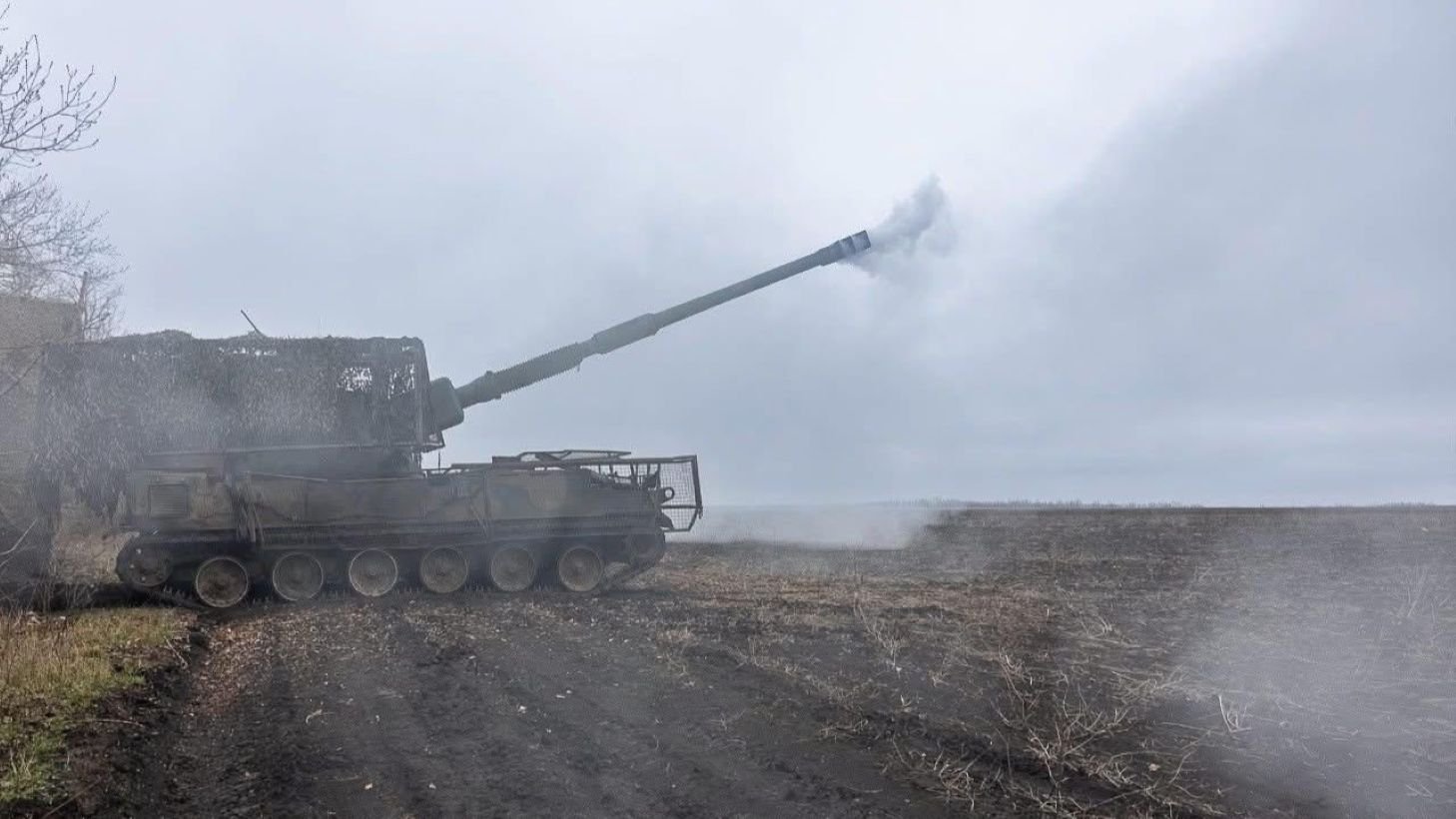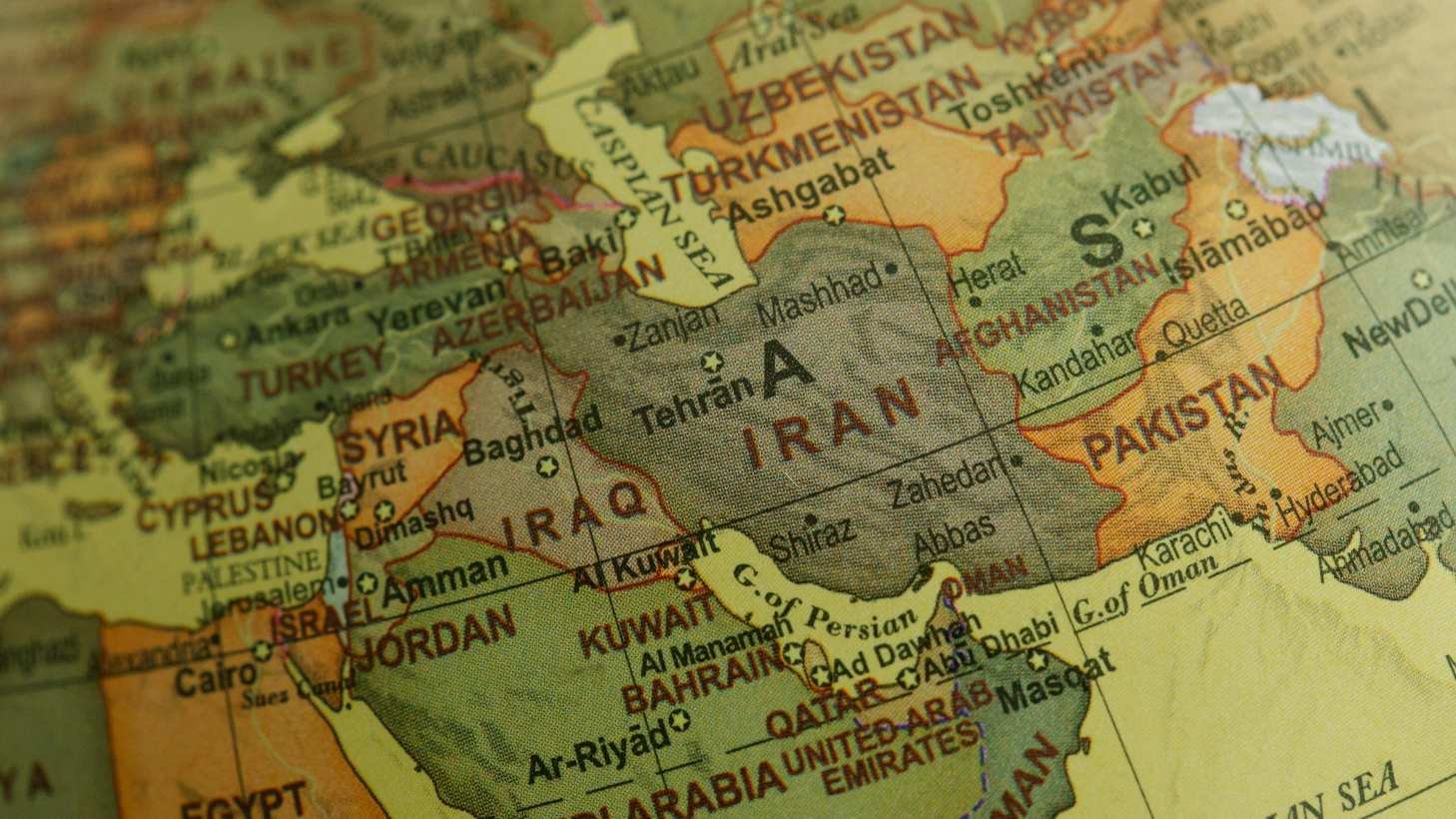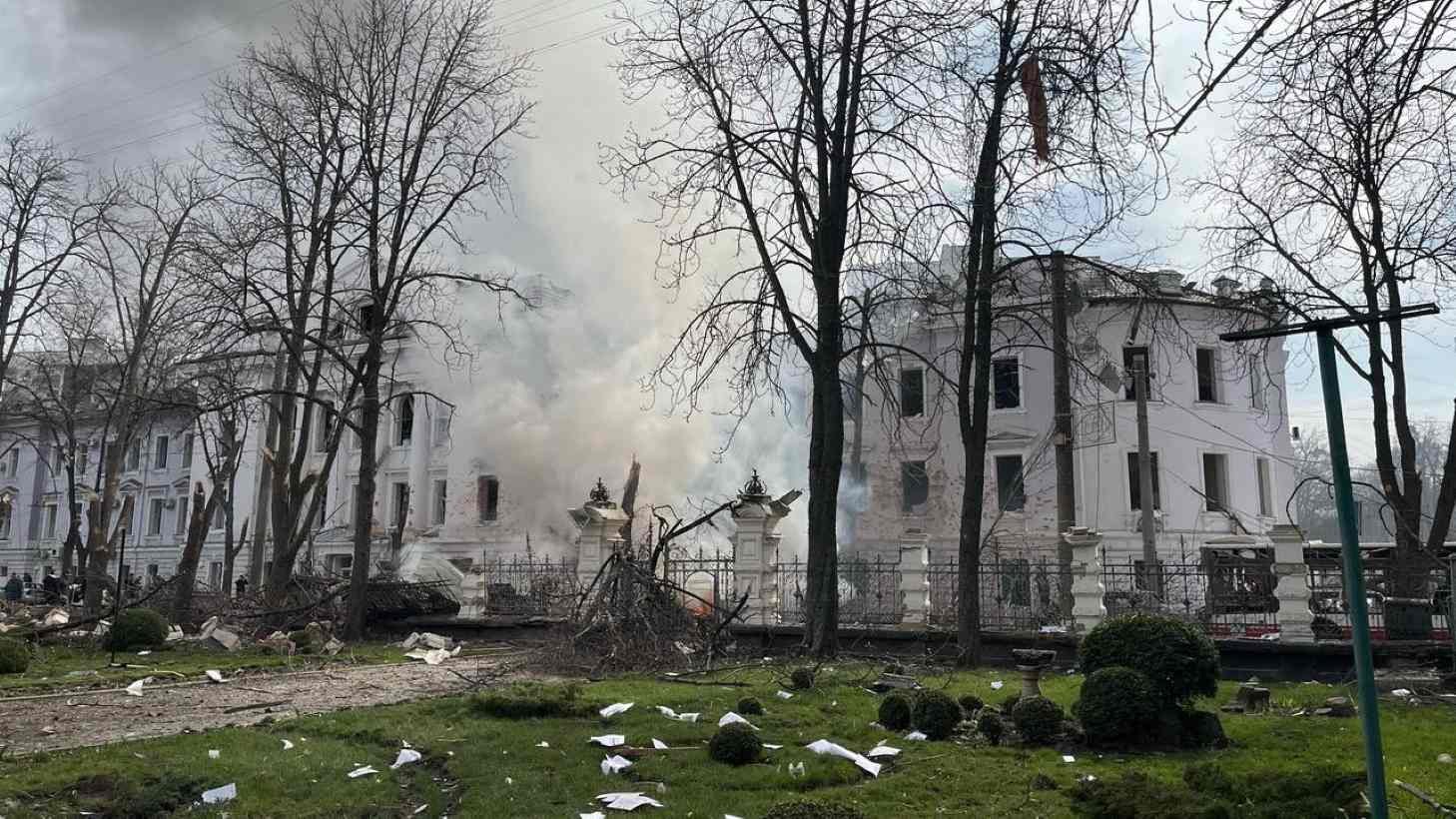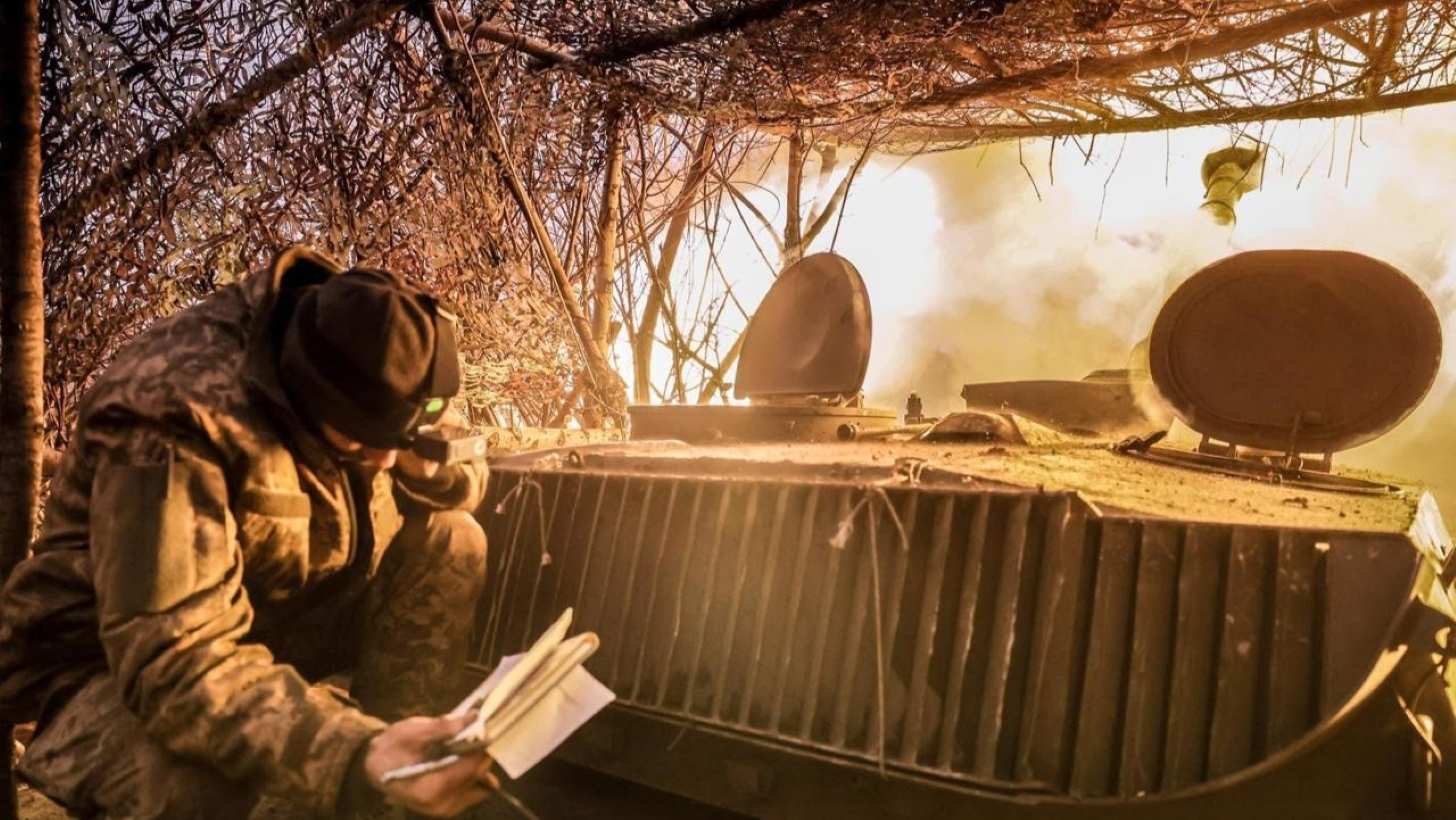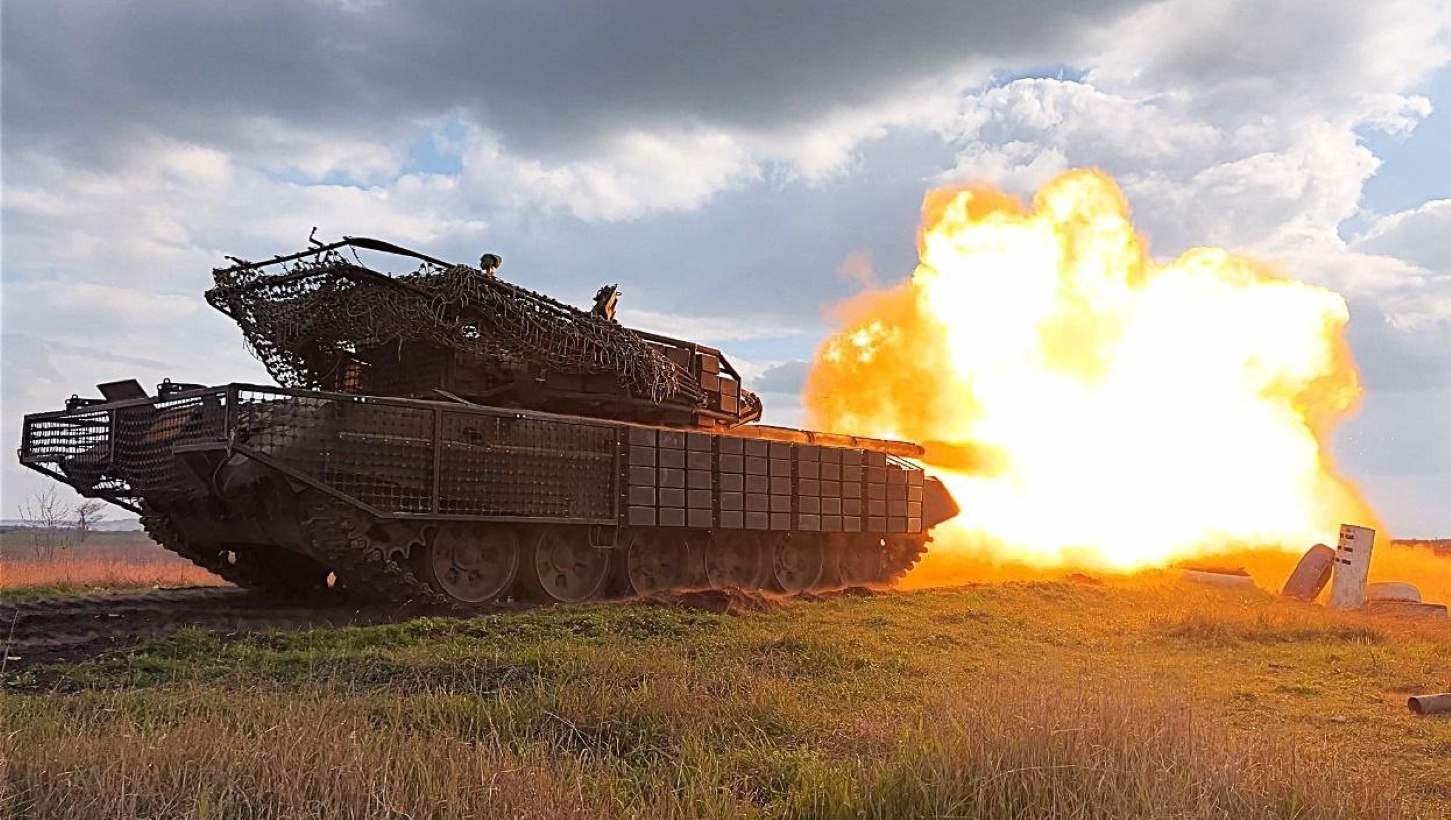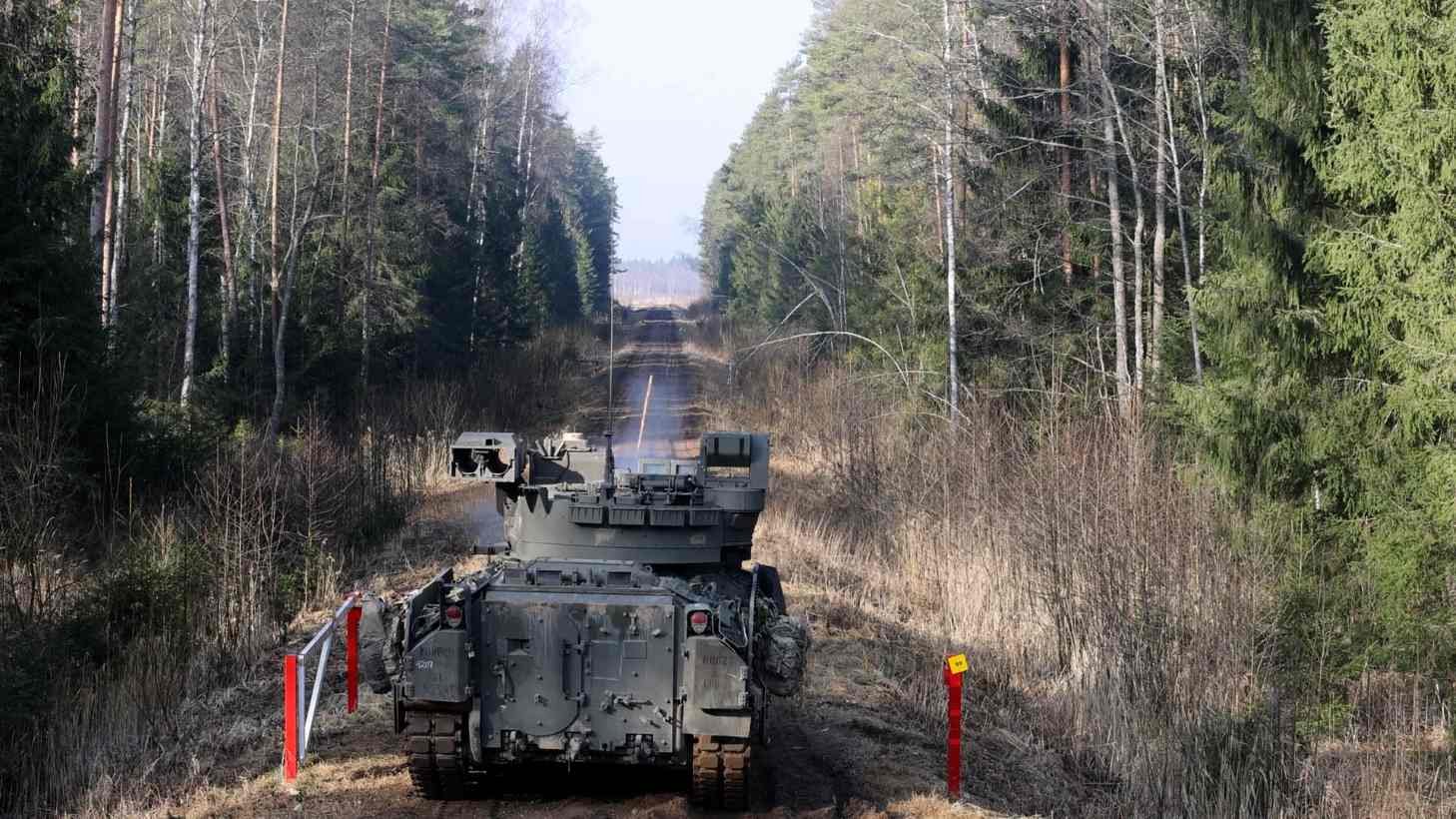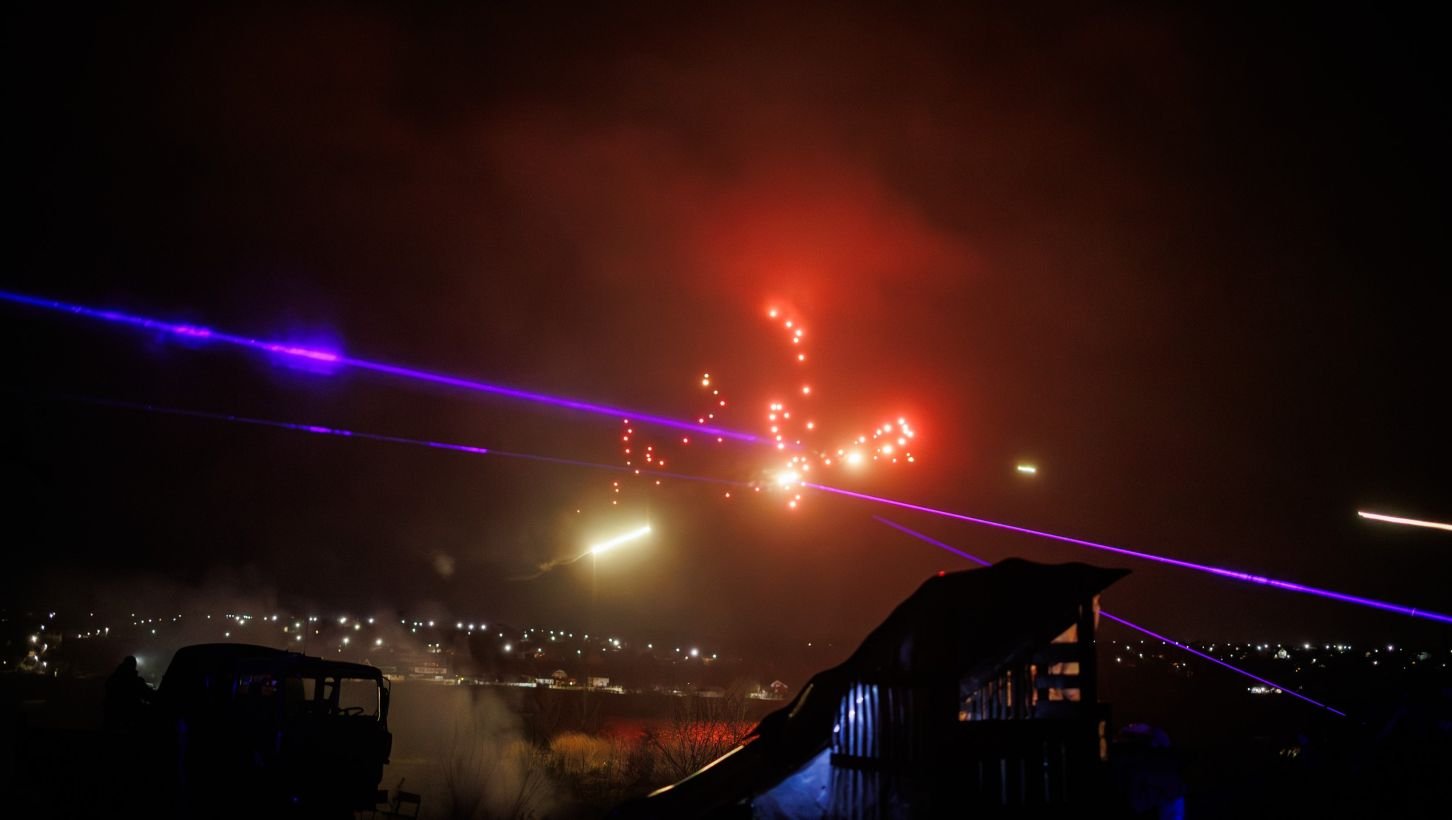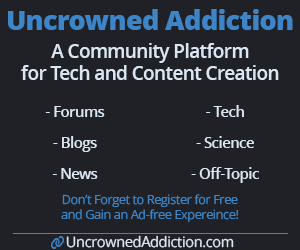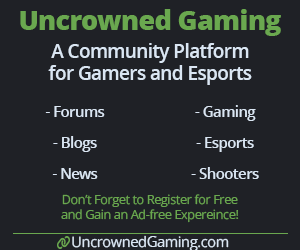All Activity
- Earlier
-
Norway Commits to Strengthening Ukrainian Brigade with Hefty Investment In a big move to bolster Ukraine's military strength, Norway has recently proclaimed a hefty pledge of approximately $937 million (equivalent to 10 billion Norwegian kroner). This funding will be directed towards the training and equipping of Ukraine's military brigade and is expected to take effect in 2025. Norwegian Defense Minister Tore O. Sandvik unveiled this plan during a Ukraine Defense Contact Group meeting on April 11 as per the official announcement made by the Norwegian government. A Nordic-Baltic Effort to Boost Ukraine’s Land Forces This substantial financial commitment is a part of a broader initiative to assist Ukraine's land forces, an initiative led by the Nordic-Baltic countries. In this endeavor, Norway has assumed the primary role for the training component and is articulating its strategies in tandem with Ukrainian authorities and allied nations. Emphasizing Norway's commitment, Sandvik stated, "Norway stands united with Europe for stronger support for Ukraine, politically, economically, and militarily." He stressed that this contribution demonstrates both a crucial boost in defense materials and acquisitions of ammunition and materiel from Ukrainian and international industries, along with the imperative of providing training. Enhancing Current Brigades Rather than Building New Ones Instead of risking the establishment of an entirely novel brigade, Norway's initiative is zeroing in on the development of modular units. These smaller components are designed to incorporate into and augment Ukraine's current brigades, which typically comprise 3,000 to 5,000 soldiers and boast a range of combat capabilities, thereby enabling them to operate autonomously. Sandvik emphasized the close cooperation between Norway and Ukrainian authorities to optimally fulfill Ukraine's military needs through this training and equipment. Previous initiatives from Ukraine's Western allies to train and equip new brigades have sparked controversy. Although France had committed to training and supplying military aid to the 155th Brigade, a Ukrainian project, critics highlighted management issues with the unit's development, allegedly leading to 1,700 soldiers going AWOL before seeing any combat. During the Brussels summit, Sandvik discussed these matters in a bilateral meeting with Ukrainian Defense Minister Rustem Umerov. Norway joins the U.K.'s Pledge for Joint Military Aid. In collaboration with the U.K., Norway has also pledged a joint $585 million military aid package to Ukraine. Bloomberg reports that the International Fund for Ukraine, led by the U.K., will be the channel through which the U.K. will contribute approximately $455 million, and Norway will chip in approximately $130 million. This package is designed to support the repair of previously provided equipment, radar systems, anti-tank mines, and hundreds of thousands of drones. In addition to these decisions, Oslo earlier this week committed $454 million towards the procurement of artillery shells for Ukraine, further demonstrating its dedication to enhancing the European nation's military capacities.
-
- norway military aid
- ukraine training initiative
- (and 3 more)
-
Norway Commits to Strengthening Ukrainian Brigade with Hefty Investment In a big move to bolster Ukraine's military strength, Norway has recently proclaimed a hefty pledge of approximately $937 million (equivalent to 10 billion Norwegian kroner). This funding will be directed towards the training and equipping of Ukraine's military brigade and is expected to take effect in 2025. Norwegian Defense Minister Tore O. Sandvik unveiled this plan during a Ukraine Defense Contact Group meeting on April 11 as per the official announcement made by the Norwegian government. A Nordic-Baltic Effort to Boost Ukraine’s Land Forces This substantial financial commitment is a part of a broader initiative to assist Ukraine's land forces, an initiative led by the Nordic-Baltic countries. In this endeavor, Norway has assumed the primary role for the training component and is articulating its strategies in tandem with Ukrainian authorities and allied nations. Emphasizing Norway's commitment, Sandvik stated, "Norway stands united with Europe for stronger support for Ukraine, politically, economically, and militarily." He stressed that this contribution demonstrates both a crucial boost in defense materials and acquisitions of ammunition and materiel from Ukrainian and international industries, along with the imperative of providing training. Enhancing Current Brigades Rather than Building New Ones Instead of risking the establishment of an entirely novel brigade, Norway's initiative is zeroing in on the development of modular units. These smaller components are designed to incorporate into and augment Ukraine's current brigades, which typically comprise 3,000 to 5,000 soldiers and boast a range of combat capabilities, thereby enabling them to operate autonomously. Sandvik emphasized the close cooperation between Norway and Ukrainian authorities to optimally fulfill Ukraine's military needs through this training and equipment. Previous initiatives from Ukraine's Western allies to train and equip new brigades have sparked controversy. Although France had committed to training and supplying military aid to the 155th Brigade, a Ukrainian project, critics highlighted management issues with the unit's development, allegedly leading to 1,700 soldiers going AWOL before seeing any combat. During the Brussels summit, Sandvik discussed these matters in a bilateral meeting with Ukrainian Defense Minister Rustem Umerov. Norway joins the U.K.'s Pledge for Joint Military Aid. In collaboration with the U.K., Norway has also pledged a joint $585 million military aid package to Ukraine. Bloomberg reports that the International Fund for Ukraine, led by the U.K., will be the channel through which the U.K. will contribute approximately $455 million, and Norway will chip in approximately $130 million. This package is designed to support the repair of previously provided equipment, radar systems, anti-tank mines, and hundreds of thousands of drones. In addition to these decisions, Oslo earlier this week committed $454 million towards the procurement of artillery shells for Ukraine, further demonstrating its dedication to enhancing the European nation's military capacities. View full article
-
- norway military aid
- ukraine training initiative
- (and 3 more)
-

US and Iran Begin Indirect Talks for Potential New Nuclear Deal
Uncrowned Guard posted an article in Military News
U.S. and Iran Engage in "Indirect" Nuclear Deal Negotiations The United States and Iran initiated 'indirect' dialogue in Oman regarding a new nuclear agreement on Saturday. High-level interactions between the two nations have been at a standstill since 2018, when President Donald Trump withdrew the U.S. from a previously established nuclear deal. These critical conversations, facilitated by the Trump administration's Middle East envoy Steve Witkoff and Iranian Foreign Minister Abbas Araghchi, are planned to reconvene after seven days. Oman: The Mediator in Ongoing Talks Omani Foreign Minister, Badr bin Hamad Al Busaidi, played a vital role as the intermediary of the dialogue. The negotiations followed a structure of indirect communication, with each side presenting their positions through four exchanges in separate rooms. However, Witkoff and Araghchi shared a short direct dialogue at the end of the meeting. A statement from the White House specified the productive nature of these talks and expressed gratitude towards the Sultanate of Oman for its support. Positive Atmosphere Amid Complicated Issues The White House further highlighted the complexity of the issues at hand in the negotiations and acknowledged that Witkoff's direct communication with Araghchi marked a step forward towards a mutually beneficial outcome. However, the Iranian foreign ministry indicated that the venue for the next dialogue may not necessarily be Oman. Araghchi noted that this initial interaction was conducted in a respectful scenario with both parties demonstrating commitment towards progressing the talks to reach a well-received agreement. The Iranian foreign minister aims to reach an 'initial understanding' with the U.S. and proceed to a negotiation process. Trump's Nuclear Ambitions and Iran's Regional Influence President Trump has given Iran a strict two-month deadline for a deal that significantly reduces or potentially eliminates its nuclear stockpile. He voiced his desire for Iran to be a prosperous nation, but without the possession of nuclear weapons. This stance was communicated earlier to Iran's supreme leader, Ayatollah Ali Khamenei, via a letter through the United Arab Emirates. The letter addressed Trump's desire for a peaceful resolution to prevent Iran from acquiring nuclear weapons and sidestep possible military strikes from the U.S. and its ally Israel. Iran's regional authority has been significantly weakened over the past few years due to Israeli strikes against Hezbollah in Lebanon, the overthrow of Syria's Bashar al-Assad, and unprecedented attacks within its borders. Despite these setbacks, Iran remains firm on its negotiations' red lines, which include threatening language, exploitative demands related to its nuclear and defense sector. Hope for a Stronger Agreement The Trump administration hopes for a more robust agreement than the 2015 nuclear deal, known as the Joint Comprehensive Plan of Action (JCPOA), led by the Obama administration. The JCPOA, which temporarily halted Iran's nuclear development, was signed by a coalition comprising China, Russia, France, Britain, Germany, the U.S., and the European Union. However, Trump deemed the JCPOA a failure and asserted that it financed a regime promoting terrorism. Therefore, a larger spectrum of issues concerning Iran must be addressed in the discussions, a senior administration official suggested. It currently remains unclear whether Iran will be willing to negotiate beyond returning to the JCPOA framework. The Long Road to Reaching an Agreement Assertion from various officials makes it evident that the primary objective is to ensure that Iran never acquires a nuclear weapon. However, reaching this goal requires sincere intentions and a genuine will to find common ground from both parties. Trump has warned it would be a "very bad day for Iran" if they were unsuccessful in this endeavor. As negotiations continue amidst this high-stakes diplomatic play, the world keenly watches the unfolding of events in hope for increased peace and stability in the Middle East.-
- nuclear talks
- u.s.-iran relations
- (and 3 more)
-
U.S. and Iran Engage in "Indirect" Nuclear Deal Negotiations The United States and Iran initiated 'indirect' dialogue in Oman regarding a new nuclear agreement on Saturday. High-level interactions between the two nations have been at a standstill since 2018, when President Donald Trump withdrew the U.S. from a previously established nuclear deal. These critical conversations, facilitated by the Trump administration's Middle East envoy Steve Witkoff and Iranian Foreign Minister Abbas Araghchi, are planned to reconvene after seven days. Oman: The Mediator in Ongoing Talks Omani Foreign Minister, Badr bin Hamad Al Busaidi, played a vital role as the intermediary of the dialogue. The negotiations followed a structure of indirect communication, with each side presenting their positions through four exchanges in separate rooms. However, Witkoff and Araghchi shared a short direct dialogue at the end of the meeting. A statement from the White House specified the productive nature of these talks and expressed gratitude towards the Sultanate of Oman for its support. Positive Atmosphere Amid Complicated Issues The White House further highlighted the complexity of the issues at hand in the negotiations and acknowledged that Witkoff's direct communication with Araghchi marked a step forward towards a mutually beneficial outcome. However, the Iranian foreign ministry indicated that the venue for the next dialogue may not necessarily be Oman. Araghchi noted that this initial interaction was conducted in a respectful scenario with both parties demonstrating commitment towards progressing the talks to reach a well-received agreement. The Iranian foreign minister aims to reach an 'initial understanding' with the U.S. and proceed to a negotiation process. Trump's Nuclear Ambitions and Iran's Regional Influence President Trump has given Iran a strict two-month deadline for a deal that significantly reduces or potentially eliminates its nuclear stockpile. He voiced his desire for Iran to be a prosperous nation, but without the possession of nuclear weapons. This stance was communicated earlier to Iran's supreme leader, Ayatollah Ali Khamenei, via a letter through the United Arab Emirates. The letter addressed Trump's desire for a peaceful resolution to prevent Iran from acquiring nuclear weapons and sidestep possible military strikes from the U.S. and its ally Israel. Iran's regional authority has been significantly weakened over the past few years due to Israeli strikes against Hezbollah in Lebanon, the overthrow of Syria's Bashar al-Assad, and unprecedented attacks within its borders. Despite these setbacks, Iran remains firm on its negotiations' red lines, which include threatening language, exploitative demands related to its nuclear and defense sector. Hope for a Stronger Agreement The Trump administration hopes for a more robust agreement than the 2015 nuclear deal, known as the Joint Comprehensive Plan of Action (JCPOA), led by the Obama administration. The JCPOA, which temporarily halted Iran's nuclear development, was signed by a coalition comprising China, Russia, France, Britain, Germany, the U.S., and the European Union. However, Trump deemed the JCPOA a failure and asserted that it financed a regime promoting terrorism. Therefore, a larger spectrum of issues concerning Iran must be addressed in the discussions, a senior administration official suggested. It currently remains unclear whether Iran will be willing to negotiate beyond returning to the JCPOA framework. The Long Road to Reaching an Agreement Assertion from various officials makes it evident that the primary objective is to ensure that Iran never acquires a nuclear weapon. However, reaching this goal requires sincere intentions and a genuine will to find common ground from both parties. Trump has warned it would be a "very bad day for Iran" if they were unsuccessful in this endeavor. As negotiations continue amidst this high-stakes diplomatic play, the world keenly watches the unfolding of events in hope for increased peace and stability in the Middle East. View full article
-
- nuclear talks
- u.s.-iran relations
- (and 3 more)
-
Global Outcry Over Deadly Missile Strike on Sumy In an unprecedented assault, a Russian missile hit the Ukrainian city of Sumy, leading to the demise of at least 32 civilians, amongst which were two children. This incident stands as one of the most lethal attacks on urban regions to date. Strong Words of Condemnation from Western Leaders The Western authorities instantly demanded culpability in the wake of the early morning devastation on April 13, Palm Sunday. This includes notable figures from the United States and France. Keith Kellogg, specially designated by U.S. President Donald Trump as the envoy to Ukraine, expressed his horror. He said, “Today's Palm Sunday attack by Russian forces on civilian targets in Sumy goes beyond any shred of human decency. The civilian death and injury toll is steep. As a former military leader, I'm cognizant of target selectivity, which is reprehensible. Hence, President Trump is striving urgently to bring peace.” France's President Emmanuel Macron unequivocally expressed his denunciation of the attack. He stated, “Earlier today, two Russian missiles penetrated the core of Sumy, Ukraine, resulting in several civilian victims, including children, yet again. The culpability lies with Russia for initiating this war. Today, Russia's conscious choice to perpetuate the war blatantly disregards human lives, international law, and President Trump's peace-making efforts.” President Macron further urged for swift international steps to pressurize Moscow into accepting a ceasefire and stated that “France, in conjunction with its partners, is ceaselessly striving for this objective.” Details of the Attack and Aftermath Per Ukrainian officials, two Iskander-M ballistic missiles were deployed from within Russia by the 112th and 448th Missile Brigades. These missiles, equipped with 9M723 fragmentation high-explosive warheads, impacted a crowded street in Sumy's center. Officials confirmed that the launch sites were Liski, Voronezh Oblast, and Lezhenki, Kursk Oblast. The attack resulted in mass destruction with ruins scattered across the streets. Emergency personnel, alongside volunteers, are painstakingly sifting through the wreckage in hope of finding survivors. Ukrainian authorities emphasized that the attack was intentional, pointing out that there were no military installations in the vicinity. The Ministry of Defense labeled the strike as a “calculated act of terror” and solicited increased Western military and humanitarian support. Despite intensive international mediation efforts, Russian missile and drone attacks have not ceased. These assaults continually target civilian infrastructure, leading to a high number of civilian casualties.
-
- sumy attack
- ukraine conflict
- (and 3 more)
-
Global Outcry Over Deadly Missile Strike on Sumy In an unprecedented assault, a Russian missile hit the Ukrainian city of Sumy, leading to the demise of at least 32 civilians, amongst which were two children. This incident stands as one of the most lethal attacks on urban regions to date. Strong Words of Condemnation from Western Leaders The Western authorities instantly demanded culpability in the wake of the early morning devastation on April 13, Palm Sunday. This includes notable figures from the United States and France. Keith Kellogg, specially designated by U.S. President Donald Trump as the envoy to Ukraine, expressed his horror. He said, “Today's Palm Sunday attack by Russian forces on civilian targets in Sumy goes beyond any shred of human decency. The civilian death and injury toll is steep. As a former military leader, I'm cognizant of target selectivity, which is reprehensible. Hence, President Trump is striving urgently to bring peace.” France's President Emmanuel Macron unequivocally expressed his denunciation of the attack. He stated, “Earlier today, two Russian missiles penetrated the core of Sumy, Ukraine, resulting in several civilian victims, including children, yet again. The culpability lies with Russia for initiating this war. Today, Russia's conscious choice to perpetuate the war blatantly disregards human lives, international law, and President Trump's peace-making efforts.” President Macron further urged for swift international steps to pressurize Moscow into accepting a ceasefire and stated that “France, in conjunction with its partners, is ceaselessly striving for this objective.” Details of the Attack and Aftermath Per Ukrainian officials, two Iskander-M ballistic missiles were deployed from within Russia by the 112th and 448th Missile Brigades. These missiles, equipped with 9M723 fragmentation high-explosive warheads, impacted a crowded street in Sumy's center. Officials confirmed that the launch sites were Liski, Voronezh Oblast, and Lezhenki, Kursk Oblast. The attack resulted in mass destruction with ruins scattered across the streets. Emergency personnel, alongside volunteers, are painstakingly sifting through the wreckage in hope of finding survivors. Ukrainian authorities emphasized that the attack was intentional, pointing out that there were no military installations in the vicinity. The Ministry of Defense labeled the strike as a “calculated act of terror” and solicited increased Western military and humanitarian support. Despite intensive international mediation efforts, Russian missile and drone attacks have not ceased. These assaults continually target civilian infrastructure, leading to a high number of civilian casualties. View full article
-
- sumy attack
- ukraine conflict
- (and 3 more)
-

Russia Launches Spring Offensive in Northeastern Ukraine
Uncrowned Guard posted an article in Ongoing Conflicts
Russia's New Spring Offensive Engages in Northeastern Ukraine President Volodymyr Zelensky informed the press on April 9 about Russia's new spring offensive, focusing its forces in Northeastern Ukraine. According to Commander-in-Chief Oleksandr Syrskyi, indications show that Russia's campaign has already kicked off. This doesn't come as a surprise, as Zelensky previously hinted at Russia's preparedness for an imminent spring offensive against the Kharkiv and Sumy regions. Remarkable Presence of Russian Troops in Kursk The President further disclosed that over 67,000 Russian soldiers are presently stationed in Kursk, clearing the way for an imminent assault in Sumy. In what appears to be a strategic move, the Ukrainian Armed Forces have successfully thwarted any potential Russian advances toward Kharkiv and Sumy provinces from Russia's Belgorod Oblast. Zelensky outlined that Russia's relentless efforts have resulted in significant losses on their part, with the expectation of more attempts in the Kharkiv and Sumy regions. These assertions confirm the relentless determination of Russia to capture vast regions of Ukrainian territory. Russia’s Unchanged Agenda: Reflecting on the Initial Conflict Zelensky provided insights into Russia's unchanging strategies, expressing that their goals, which initially targeted Sumy, Kharkiv, and Zaporizhia directions, have seemingly remained intact. He elaborated, "They are persistent about the East. They aim to expand access to the borders of Donetsk and Luhansk provinces. This was their plan from the start of the war.” November 2024 marked a significant period for Russia, as it experienced substantial tactical gains. However, this progress quickly plateaued, and what followed was a sharp increase in losses and a noticeable reduction in advances. Zelensky’s Eye-Opening Remarks about Putin's New Offensive In a publicly released interview on March 26, Zelensky highlighted the escalating circumstances, asserting that Russia's President Vladimir Putin was preparing for a fresh offensive, primarily concentrating on Sumy and Kharkiv oblasts. Zelensky confirmed, "Putin is buying time and strategizing for a spring offensive. We have observed preparations for this impending operation." His remarks symbolize the escalating geopolitical tension and call for the world's attention to Russia's relentless pursuit of territorial acquisition. -
Russia's New Spring Offensive Engages in Northeastern Ukraine President Volodymyr Zelensky informed the press on April 9 about Russia's new spring offensive, focusing its forces in Northeastern Ukraine. According to Commander-in-Chief Oleksandr Syrskyi, indications show that Russia's campaign has already kicked off. This doesn't come as a surprise, as Zelensky previously hinted at Russia's preparedness for an imminent spring offensive against the Kharkiv and Sumy regions. Remarkable Presence of Russian Troops in Kursk The President further disclosed that over 67,000 Russian soldiers are presently stationed in Kursk, clearing the way for an imminent assault in Sumy. In what appears to be a strategic move, the Ukrainian Armed Forces have successfully thwarted any potential Russian advances toward Kharkiv and Sumy provinces from Russia's Belgorod Oblast. Zelensky outlined that Russia's relentless efforts have resulted in significant losses on their part, with the expectation of more attempts in the Kharkiv and Sumy regions. These assertions confirm the relentless determination of Russia to capture vast regions of Ukrainian territory. Russia’s Unchanged Agenda: Reflecting on the Initial Conflict Zelensky provided insights into Russia's unchanging strategies, expressing that their goals, which initially targeted Sumy, Kharkiv, and Zaporizhia directions, have seemingly remained intact. He elaborated, "They are persistent about the East. They aim to expand access to the borders of Donetsk and Luhansk provinces. This was their plan from the start of the war.” November 2024 marked a significant period for Russia, as it experienced substantial tactical gains. However, this progress quickly plateaued, and what followed was a sharp increase in losses and a noticeable reduction in advances. Zelensky’s Eye-Opening Remarks about Putin's New Offensive In a publicly released interview on March 26, Zelensky highlighted the escalating circumstances, asserting that Russia's President Vladimir Putin was preparing for a fresh offensive, primarily concentrating on Sumy and Kharkiv oblasts. Zelensky confirmed, "Putin is buying time and strategizing for a spring offensive. We have observed preparations for this impending operation." His remarks symbolize the escalating geopolitical tension and call for the world's attention to Russia's relentless pursuit of territorial acquisition. View full article
-
Chinese Nationals Combat Ukraine, According to Ukrainian Intelligence Over 160 Chinese citizens are actively involved in the war against Ukraine, serving under Russia's Armed Forces, as revealed by Ukrainian intelligence documents. This data, obtained by the Kyiv Independent, elucidates that 155 Chinese citizens are routing against Ukrainians on Ukrainian ground. The Ukrainian president, Mr. Volodymyr Zelensky, substantiated these claims and expressed concerns about this increasing foreign involvement. Ukrainian intelligence has successfully identified two Chinese soldiers, Wang Guangjun and Zhang Renbo. Interestingly, one of these captives stated that he paid a substantial sum to a middleman in his homeland to join the Russian military with the allure of Russian citizenship. Zelensky mentioned that propaganda fueling Chinese recruitment for the Russian military is rampant on Chinese social media. In response to these revelations, Beijing expressed that it is "verifying" the assertion, while reinforcing that involvement in foreign armed conflicts is illegal for Chinese citizens. Meanwhile, the U.S. State Department labeled the incident as "disturbing," promising to keep a close eye on these developments. Russia Rolls Out Spring Offensive, claims Ukrainian Commander-in-Chief. Russia's spring offensive against northeastern Ukraine has already taken shape, according to Commander-in-Chief Oleksandr Syrskyi. Syrskyi's remarks echo President Zelensky's warning about Moscow mobilizing forces for a new offensive against the Kharkiv and Sumy oblasts this season. Syrskyi confirmed, "this offensive has effectively already begun," pointing out a surge in Russian operations in principal sectors over the past week. Zelensky Shows Readiness to Invest in U.S. Military Aid In an effort to bolster Ukraine's defense, President Zelensky expressed Ukraine's readiness to invest up to $50 billion for potential military aid from the U.S. Despite funds from the Biden administration not yet being fully exhausted, Kyiv seeks additional aid from the U.S., viewing it as a potential security guarantee. Zelensky implied flexibility in the form in which they receive this aid, be it from a reconstruction investment fund or direct payments to the U.S., emphasizing their firm resolve to marshal both $30 billion and $50 billion for suitable aid. However, the provision of U.S. military assistance to Ukraine appears to be dwindling, as European nations have begun shouldering the majority of the aid, as per Commander-in-Chief Syrskyi.
-
Chinese Nationals Combat Ukraine, According to Ukrainian Intelligence Over 160 Chinese citizens are actively involved in the war against Ukraine, serving under Russia's Armed Forces, as revealed by Ukrainian intelligence documents. This data, obtained by the Kyiv Independent, elucidates that 155 Chinese citizens are routing against Ukrainians on Ukrainian ground. The Ukrainian president, Mr. Volodymyr Zelensky, substantiated these claims and expressed concerns about this increasing foreign involvement. Ukrainian intelligence has successfully identified two Chinese soldiers, Wang Guangjun and Zhang Renbo. Interestingly, one of these captives stated that he paid a substantial sum to a middleman in his homeland to join the Russian military with the allure of Russian citizenship. Zelensky mentioned that propaganda fueling Chinese recruitment for the Russian military is rampant on Chinese social media. In response to these revelations, Beijing expressed that it is "verifying" the assertion, while reinforcing that involvement in foreign armed conflicts is illegal for Chinese citizens. Meanwhile, the U.S. State Department labeled the incident as "disturbing," promising to keep a close eye on these developments. Russia Rolls Out Spring Offensive, claims Ukrainian Commander-in-Chief. Russia's spring offensive against northeastern Ukraine has already taken shape, according to Commander-in-Chief Oleksandr Syrskyi. Syrskyi's remarks echo President Zelensky's warning about Moscow mobilizing forces for a new offensive against the Kharkiv and Sumy oblasts this season. Syrskyi confirmed, "this offensive has effectively already begun," pointing out a surge in Russian operations in principal sectors over the past week. Zelensky Shows Readiness to Invest in U.S. Military Aid In an effort to bolster Ukraine's defense, President Zelensky expressed Ukraine's readiness to invest up to $50 billion for potential military aid from the U.S. Despite funds from the Biden administration not yet being fully exhausted, Kyiv seeks additional aid from the U.S., viewing it as a potential security guarantee. Zelensky implied flexibility in the form in which they receive this aid, be it from a reconstruction investment fund or direct payments to the U.S., emphasizing their firm resolve to marshal both $30 billion and $50 billion for suitable aid. However, the provision of U.S. military assistance to Ukraine appears to be dwindling, as European nations have begun shouldering the majority of the aid, as per Commander-in-Chief Syrskyi. View full article
-
U.S. Pentagon Mulls Withdrawal of 10,000 Troops from Eastern Europe Top U.S. Defense Department officials are deliberating the possibility of pulling out up to 10,000 troops from Eastern Europe, as disclosed by six U.S. and European officials informed about these confidential discussions, reports NBC News. The proposal under consideration has sparked concerns across Europe and America, with apprehensions centering around empowering Russian President Vladimir Putin. Units Linked to Ukrainian Defense Considered for Withdrawal The units factored for potential withdrawal constitute half of the 20,000 troops, deployed by President Biden's administration in 2022. These forces aimed at bolstering the defenses of nations neighboring Ukraine following the Russian invasion. Discussions are ongoing over these prospective troop reductions in Poland and Romania, coinciding with President Trump's efforts to broker a ceasefire with Putin. If adopted by the Pentagon, this measure could amplify anxieties about the U.S. retreating from its enduring allies in Europe, who perceive Russia as an increasingly ominous threat, warned European officials. "Suspicion will arise within Russians that a downsizing of U.S. forces signifies the weakening of deterrence, thereby increasing their propensity to interfere in varied European matters," stated Seth Jones, a senior vice president at the Center for Strategic and International Studies. The Shift of U.S. Military Resources: From Europe to Asia The Trump administration has been candid about its expectations for European allies to shoulder more responsibility for their defense. This shift would then allow the U.S. to channel its military resources more towards other priorities, such as China. Pete Hegseth, during his initial overseas trip as Defense Secretary, in Brussels reiterated these sentiments, articulating the impracticality of the U.S. remaining the primary focus of Europe's security. The future policy roadmap includes a more significant focus on border security and countering China. The proposed top policy adviser and 3rd official to the Pentagon, Elbridge Colby, who is expected to be confirmed, has endorsed a more concentrated focus on the Chinese threat. This focus suggests a reprioritizing of resources that might lead to troop reductions in Europe. However, the proposition has not been devoid of criticism. Sen. Roger Wicker, chairman of the Armed Services Committee, at a hearing shared his disapproval of drastically reducing the U.S. military footprint in Europe, terming the views as "misguided and dangerous." Impact of U.S. Troop Withdrawal Approximately 80,000 American troops are presently stationed in Europe. Following Russia's war initiation, bipartisan lawmakers endorsed a robust U.S. military presence on NATO's eastern flank as a significant deterrent to Putin. However, President Trump is pushing for a ceasefire in alignment with his campaign promise of quick war termination. His stance significantly differs from Biden's who committed to aid Kyiv until ultimate victory. Ben Hodges, a retired Army general, expressed concerns regarding the proposed troop withdrawal, questioning the analysis and future implications on the region's deterrent capacity. On the other hand, the reduction of the U.S. military footprint in Europe would conserve resources with potential reallocation to the Indo-Pacific region, in line with identified strategic priorities by the administration. Amid growing concerns, Russia continues its military modernization, including the ramping up of weapons production. A Danish intelligence report indicated the potential for a large-scale war waged by Russia in Eastern Europe if NATO fails to reinforce its defenses within the next five years.
-
- us troop withdrawal
- eastern europe
- (and 3 more)
-
U.S. Pentagon Mulls Withdrawal of 10,000 Troops from Eastern Europe Top U.S. Defense Department officials are deliberating the possibility of pulling out up to 10,000 troops from Eastern Europe, as disclosed by six U.S. and European officials informed about these confidential discussions, reports NBC News. The proposal under consideration has sparked concerns across Europe and America, with apprehensions centering around empowering Russian President Vladimir Putin. Units Linked to Ukrainian Defense Considered for Withdrawal The units factored for potential withdrawal constitute half of the 20,000 troops, deployed by President Biden's administration in 2022. These forces aimed at bolstering the defenses of nations neighboring Ukraine following the Russian invasion. Discussions are ongoing over these prospective troop reductions in Poland and Romania, coinciding with President Trump's efforts to broker a ceasefire with Putin. If adopted by the Pentagon, this measure could amplify anxieties about the U.S. retreating from its enduring allies in Europe, who perceive Russia as an increasingly ominous threat, warned European officials. "Suspicion will arise within Russians that a downsizing of U.S. forces signifies the weakening of deterrence, thereby increasing their propensity to interfere in varied European matters," stated Seth Jones, a senior vice president at the Center for Strategic and International Studies. The Shift of U.S. Military Resources: From Europe to Asia The Trump administration has been candid about its expectations for European allies to shoulder more responsibility for their defense. This shift would then allow the U.S. to channel its military resources more towards other priorities, such as China. Pete Hegseth, during his initial overseas trip as Defense Secretary, in Brussels reiterated these sentiments, articulating the impracticality of the U.S. remaining the primary focus of Europe's security. The future policy roadmap includes a more significant focus on border security and countering China. The proposed top policy adviser and 3rd official to the Pentagon, Elbridge Colby, who is expected to be confirmed, has endorsed a more concentrated focus on the Chinese threat. This focus suggests a reprioritizing of resources that might lead to troop reductions in Europe. However, the proposition has not been devoid of criticism. Sen. Roger Wicker, chairman of the Armed Services Committee, at a hearing shared his disapproval of drastically reducing the U.S. military footprint in Europe, terming the views as "misguided and dangerous." Impact of U.S. Troop Withdrawal Approximately 80,000 American troops are presently stationed in Europe. Following Russia's war initiation, bipartisan lawmakers endorsed a robust U.S. military presence on NATO's eastern flank as a significant deterrent to Putin. However, President Trump is pushing for a ceasefire in alignment with his campaign promise of quick war termination. His stance significantly differs from Biden's who committed to aid Kyiv until ultimate victory. Ben Hodges, a retired Army general, expressed concerns regarding the proposed troop withdrawal, questioning the analysis and future implications on the region's deterrent capacity. On the other hand, the reduction of the U.S. military footprint in Europe would conserve resources with potential reallocation to the Indo-Pacific region, in line with identified strategic priorities by the administration. Amid growing concerns, Russia continues its military modernization, including the ramping up of weapons production. A Danish intelligence report indicated the potential for a large-scale war waged by Russia in Eastern Europe if NATO fails to reinforce its defenses within the next five years. View full article
-
- us troop withdrawal
- eastern europe
- (and 3 more)
-

Ronin the Hero Rat Sets World Record in Landmine Detection
Uncrowned Guard posted an article in Ongoing Conflicts
Record-breaking Hero Rat: Ronin's Contribution to Landmine Detection In the battlefields across the globe, landmines continue to present a perilous threat, not only to soldiers involved in active conflict but also to civilians long after the wars have ended. The silent danger of millions of concealed anti-personnel mines has led to innovative safety measures involving a rather unexpected ally: rats. One rat in particular, Ronin, has made history by detecting more landmines than any other rat has managed to, earning a place in the Guinness Book of World Records. Meet Ronin: The Guinness World Record Setting Rat Ronin, based out of Cambodia, has distinguished itself by detecting 109 landmines and 15 items of unexploded ordnance since 2021, as confirmed by APOPO, the charity responsible for training the African giant pouched rat. Ronin's impactful work is recognized in Preah Vihear Province, one of the country's most devastated by landmines, by both the locals and the Guinness Book of World Records. According to the latter, his crucial contribution has made a significant difference in the lives of countless individuals living under the everyday threat of unanticipated landmine explosions. World Rat Day: Recognizing Ronin’s Achievements in Landmine Detection On April 4, a date shared by International Day for Mine Awareness and Assistance in Mine Action and World Rat Day, the Guinness Book of World Records announced Ronin's illustrious achievement. Serving as one of several specially trained animals, Ronin partakes in global efforts to deactivate and remove landmines, working with a handler in the field between August 2021 and February 2025. How Ronin and his Fellow Rats Help Save Lives Trained to detect chemicals found in explosives, rats such as Ronin can cover terrain more quickly than a human using a metal detector. Their accurate olfactory abilities center on identifying chemical compositions, ensuring they do not get diverted by extraneous metal objects. Further complemented by systematic grid training, their petite size allows them to locate and approach landmines without triggering them. Ronin and his peers only require 30 minutes of work each day to make a significant impact. The Lingering Challenge of Landmines in Cambodia With an alarming estimated 4 to 6 million buried landmines originating from conflicts dating back to the 1960s, Cambodia remains one of the most heavily mined nations in the world. Despite extensive demining efforts, these concealed threats persist, culminating in injuries and fatalities. Ronin's record surpasses that of the previous record holder, Magawa, by 38 mines. The late Magawa, memorialized with a gold medal from a veterinary charity for his work, had detected 71 landmines and 38 unexploded ordnance. Landmines: A Persisting Global Issue Despite international diplomatic efforts, such as the 1997 Ottawa Treaty to curb the proliferation of landmines and ensure their removal, these hidden threats continue to lurk in various countries around the globe. People remain at risk, even in countries where conflicts have ceased, underlining the invaluable contributions of rats like Ronin in the struggle against this deadly, hidden enemy. -
Record-breaking Hero Rat: Ronin's Contribution to Landmine Detection In the battlefields across the globe, landmines continue to present a perilous threat, not only to soldiers involved in active conflict but also to civilians long after the wars have ended. The silent danger of millions of concealed anti-personnel mines has led to innovative safety measures involving a rather unexpected ally: rats. One rat in particular, Ronin, has made history by detecting more landmines than any other rat has managed to, earning a place in the Guinness Book of World Records. Meet Ronin: The Guinness World Record Setting Rat Ronin, based out of Cambodia, has distinguished itself by detecting 109 landmines and 15 items of unexploded ordnance since 2021, as confirmed by APOPO, the charity responsible for training the African giant pouched rat. Ronin's impactful work is recognized in Preah Vihear Province, one of the country's most devastated by landmines, by both the locals and the Guinness Book of World Records. According to the latter, his crucial contribution has made a significant difference in the lives of countless individuals living under the everyday threat of unanticipated landmine explosions. World Rat Day: Recognizing Ronin’s Achievements in Landmine Detection On April 4, a date shared by International Day for Mine Awareness and Assistance in Mine Action and World Rat Day, the Guinness Book of World Records announced Ronin's illustrious achievement. Serving as one of several specially trained animals, Ronin partakes in global efforts to deactivate and remove landmines, working with a handler in the field between August 2021 and February 2025. How Ronin and his Fellow Rats Help Save Lives Trained to detect chemicals found in explosives, rats such as Ronin can cover terrain more quickly than a human using a metal detector. Their accurate olfactory abilities center on identifying chemical compositions, ensuring they do not get diverted by extraneous metal objects. Further complemented by systematic grid training, their petite size allows them to locate and approach landmines without triggering them. Ronin and his peers only require 30 minutes of work each day to make a significant impact. The Lingering Challenge of Landmines in Cambodia With an alarming estimated 4 to 6 million buried landmines originating from conflicts dating back to the 1960s, Cambodia remains one of the most heavily mined nations in the world. Despite extensive demining efforts, these concealed threats persist, culminating in injuries and fatalities. Ronin's record surpasses that of the previous record holder, Magawa, by 38 mines. The late Magawa, memorialized with a gold medal from a veterinary charity for his work, had detected 71 landmines and 38 unexploded ordnance. Landmines: A Persisting Global Issue Despite international diplomatic efforts, such as the 1997 Ottawa Treaty to curb the proliferation of landmines and ensure their removal, these hidden threats continue to lurk in various countries around the globe. People remain at risk, even in countries where conflicts have ceased, underlining the invaluable contributions of rats like Ronin in the struggle against this deadly, hidden enemy. View full article
-
Trump Proposes Record-Setting $1 Trillion Defense Budget President Donald Trump has recently suggested plans to pass a defense budget that could reach figures around $1 trillion, marking it as the most significant in the history of the United States. The proposed budget speaks to the necessity of reinforcing the military's strength in the face of escalating global threats. While addressing a meeting at the White House with Israeli Prime Minister Benjamin Netanyahu on Monday, the President stated, "We have to be careful about the costs involved, but there's an urgent need to strengthen our military infrastructure due to the presence of numerous dangerous forces worldwide." Trillion Dollar Budget Underway for 2026 Fiscal Year Although an official budget proposal for the 2026 fiscal year is yet to be put forth, indications from the President's statements confirm that the White House is actively considering a considerable hike in defense appropriation, despite the ongoing temporary funding regulations. Full details of the budget plan are anticipated to be revealed by spring. Seconding President Trump's pronouncement, Defense Secretary Pete Hegseth shared on X, "The first TRILLION dollar @DeptofDefense budget is underway. President @realDonaldTrump is on a mission to revamp our military, and that too, rapidly. We are committed to using every cent of taxpayers' money wisely, prioritizing lethality and readiness." Implications and Repercussions of the Proposed Budget Observers believe that the budget might be released in parts, possibly inaugurating with a "bare bones" budget containing only preliminary round figures. The proposition comes while the Department of Defense is undergoing an internal audit aimed at cutting down around $50 billion yearly spending throughout fiscal year 2026 and beyond. Reports suggest that the review might lead to a resource reallocation from long-standing programs to emerging ones, such as space, cyber operations, and force readiness. Concomitantly, the Pentagon is considering reducing its civilian staff by approximately 5% to 8%, suggesting a larger transition in defense strategies under the current administration. However, neither the White House nor the Pentagon has given further comments or additional information regarding the proposed budget increase.
-
- trump
- defense budget
-
(and 3 more)
Tagged with:
-
Trump Proposes Record-Setting $1 Trillion Defense Budget President Donald Trump has recently suggested plans to pass a defense budget that could reach figures around $1 trillion, marking it as the most significant in the history of the United States. The proposed budget speaks to the necessity of reinforcing the military's strength in the face of escalating global threats. While addressing a meeting at the White House with Israeli Prime Minister Benjamin Netanyahu on Monday, the President stated, "We have to be careful about the costs involved, but there's an urgent need to strengthen our military infrastructure due to the presence of numerous dangerous forces worldwide." Trillion Dollar Budget Underway for 2026 Fiscal Year Although an official budget proposal for the 2026 fiscal year is yet to be put forth, indications from the President's statements confirm that the White House is actively considering a considerable hike in defense appropriation, despite the ongoing temporary funding regulations. Full details of the budget plan are anticipated to be revealed by spring. Seconding President Trump's pronouncement, Defense Secretary Pete Hegseth shared on X, "The first TRILLION dollar @DeptofDefense budget is underway. President @realDonaldTrump is on a mission to revamp our military, and that too, rapidly. We are committed to using every cent of taxpayers' money wisely, prioritizing lethality and readiness." Implications and Repercussions of the Proposed Budget Observers believe that the budget might be released in parts, possibly inaugurating with a "bare bones" budget containing only preliminary round figures. The proposition comes while the Department of Defense is undergoing an internal audit aimed at cutting down around $50 billion yearly spending throughout fiscal year 2026 and beyond. Reports suggest that the review might lead to a resource reallocation from long-standing programs to emerging ones, such as space, cyber operations, and force readiness. Concomitantly, the Pentagon is considering reducing its civilian staff by approximately 5% to 8%, suggesting a larger transition in defense strategies under the current administration. However, neither the White House nor the Pentagon has given further comments or additional information regarding the proposed budget increase. View full article
-
- trump
- defense budget
-
(and 3 more)
Tagged with:
-
President Trump Expresses Discontent Over Russian Approach in Ukraine The United States President, Donald Trump, has publicly voiced his dissatisfaction with Russia's intensified military action in Ukraine during an Oval Office interaction with the Israeli Prime Minister, Benjamin Netanyahu, on April 7. Much to his discontent, Trump stated, "I'm not happy about what's going on with the bombing because they're bombing like crazy right now. They're bombing — I don't know what's happening there." These sentiments from the President are not new, as reflected in his comments from April 6, when he expressed his displeasure at the ongoing bombing. Escalation and Fallout Amid Ceasefire Negotiations Among the recent spate of violence is the deadly missile raid on Kryvyi Rih, Ukrainian President Volodymyr Zelensky's birthplace, on April 4. The assault claimed the lives of 20 individuals, including nine children. Two days later, a Russian ballistic missile attack in Kyiv resulted in one death and wounded three other people. On March 11, Ukraine had consented to a full 30-day ceasefire. Russia, however, refused to accede to the truce unless the terms included a reduction in foreign military aid and enforced restrictions on the Ukrainian military operations. Confidence Wavering in Ceasefire Agreement Despite the President’s role as mediator, Trump took no punitive actions in response to Russia's breaches. He stated on April 7 that Moscow had evaded U.S. tariffs because "we're not doing business, essentially, with Russia, because they're at war." NBC News and The Telegraph separately reported that Trump continues to harbor increasing resentment against Russia's unwillingness to de-escalate the conflict. Echoing Trump's initial criticism, the ceasefire agreement experienced limited success during the U.S.-mediated talks in Jeddah on March 11. The discussions resulted in a partial ceasefire focusing on preserving energy infrastructure and security in the Black Sea. However, just two days following the accord, Ukraine accused Russia of breaching the agreement by targeting power facilities in Kherson. While Russia denied these allegations, it also retaliated with a warning that it "reserves the right" to break the deal if Ukraine fails to comply. Consequences of Trade Policies Amid Tensions In the meantime, the US's "Liberation Day" policy announcement imposed tariffs on several major US trading partners, including a 10% tariff on Ukraine. The European Union and China experienced a steeper rise, with rates set at 20% and 54% respectively. However, Russia, Belarus, North Korea, and Cuba were omitted from this list. Despite Trump's continual public disapproval of the violence, he has not yet imposed sanctions or direct measures to pressurize the Kremlin, which constantly conducts offensive operations in Ukraine.
-
President Trump Expresses Discontent Over Russian Approach in Ukraine The United States President, Donald Trump, has publicly voiced his dissatisfaction with Russia's intensified military action in Ukraine during an Oval Office interaction with the Israeli Prime Minister, Benjamin Netanyahu, on April 7. Much to his discontent, Trump stated, "I'm not happy about what's going on with the bombing because they're bombing like crazy right now. They're bombing — I don't know what's happening there." These sentiments from the President are not new, as reflected in his comments from April 6, when he expressed his displeasure at the ongoing bombing. Escalation and Fallout Amid Ceasefire Negotiations Among the recent spate of violence is the deadly missile raid on Kryvyi Rih, Ukrainian President Volodymyr Zelensky's birthplace, on April 4. The assault claimed the lives of 20 individuals, including nine children. Two days later, a Russian ballistic missile attack in Kyiv resulted in one death and wounded three other people. On March 11, Ukraine had consented to a full 30-day ceasefire. Russia, however, refused to accede to the truce unless the terms included a reduction in foreign military aid and enforced restrictions on the Ukrainian military operations. Confidence Wavering in Ceasefire Agreement Despite the President’s role as mediator, Trump took no punitive actions in response to Russia's breaches. He stated on April 7 that Moscow had evaded U.S. tariffs because "we're not doing business, essentially, with Russia, because they're at war." NBC News and The Telegraph separately reported that Trump continues to harbor increasing resentment against Russia's unwillingness to de-escalate the conflict. Echoing Trump's initial criticism, the ceasefire agreement experienced limited success during the U.S.-mediated talks in Jeddah on March 11. The discussions resulted in a partial ceasefire focusing on preserving energy infrastructure and security in the Black Sea. However, just two days following the accord, Ukraine accused Russia of breaching the agreement by targeting power facilities in Kherson. While Russia denied these allegations, it also retaliated with a warning that it "reserves the right" to break the deal if Ukraine fails to comply. Consequences of Trade Policies Amid Tensions In the meantime, the US's "Liberation Day" policy announcement imposed tariffs on several major US trading partners, including a 10% tariff on Ukraine. The European Union and China experienced a steeper rise, with rates set at 20% and 54% respectively. However, Russia, Belarus, North Korea, and Cuba were omitted from this list. Despite Trump's continual public disapproval of the violence, he has not yet imposed sanctions or direct measures to pressurize the Kremlin, which constantly conducts offensive operations in Ukraine. View full article
-
UK Discovers Suspected Russian Spy Sensors in Local Waters The UK military has discovered underwater devices suspected to be Russian spy sensors. According to reports from the Sunday Times, these devices are believed to be focused on the nation's nuclear submarines. The Royal Navy reportedly found multiple devices lodged in the seabed, with several others washed ashore. Intelligence chiefs surmise they were planted to gather data on the UK's four nuclear-armed submarines. The Resurgence of Cold War Incidents The report further hints at a clandestine warfare simmering in the Atlantic. A UK military senior figure informed the press, "This is a game of cat and mouse that has been playing out since the end of the Cold War, and it appears to be gaining heat once again." These revelations emerged as a result of a three-month investigation by the newspaper. Evidence pointed to unmanned Russian devices spotted close to deep-sea communication cables. The report also suggested that superyachts owned by Russian oligarchs could have been employed to carry out reconnaissance missions underwater. The Need for Strengthened Surveillance Former minister Tobias Ellwood alluded to the discovery of these sensors, underscoring the necessity for significant expansion of the UK’s naval surveillance prowess. Ellwood remarked on Britain's need to catch up in keeping tabs on Russia’s subaqueous activities. He accentuated the threat to the nation's security, as 90 per cent of the UK’s data and 60 per cent of its gas is delivered through undersea cables and pipelines, respectively. He posits that the UK could sustain extensive damage through sabotage, which would also be inexpensive and easily deniable. The Times disclosed evidence of "unmanned Russian vehicles" lurking near deep-sea communication cables. It also suggested that British energy and technology companies should collaborate more closely with the military to fortify underwater infrastructure. UK Government's Stance on the Issue The official confirmation of the devices’ existence and their purported function has yet to be ratified by the UK government. Yet, a senior military figure reasserted, “There should be no doubt, there is a war raging in the Atlantic. This is a game of cat and mouse...We are seeing phenomenal amounts of Russian activity.” This report comes on the heels of reports less than two weeks ago of the Royal Navy shadowing three Russian ships through the English Channel. These ships reportedly included an oceanographic survey ship previously suspected of involvement in operations to map Britain’s critical undersea infrastructure. Defending Britain's territorial waters, Defence Secretary John Healey issued a stark warning to the Russian Federation earlier this year, bringing attention to numerous instances of suspicious Russian activities in the region. He sent a potent message to Russian President Vladimir Putin: "We see you."
-
- uk military
- russian spy sensors
- (and 10 more)
-
UK Discovers Suspected Russian Spy Sensors in Local Waters The UK military has discovered underwater devices suspected to be Russian spy sensors. According to reports from the Sunday Times, these devices are believed to be focused on the nation's nuclear submarines. The Royal Navy reportedly found multiple devices lodged in the seabed, with several others washed ashore. Intelligence chiefs surmise they were planted to gather data on the UK's four nuclear-armed submarines. The Resurgence of Cold War Incidents The report further hints at a clandestine warfare simmering in the Atlantic. A UK military senior figure informed the press, "This is a game of cat and mouse that has been playing out since the end of the Cold War, and it appears to be gaining heat once again." These revelations emerged as a result of a three-month investigation by the newspaper. Evidence pointed to unmanned Russian devices spotted close to deep-sea communication cables. The report also suggested that superyachts owned by Russian oligarchs could have been employed to carry out reconnaissance missions underwater. The Need for Strengthened Surveillance Former minister Tobias Ellwood alluded to the discovery of these sensors, underscoring the necessity for significant expansion of the UK’s naval surveillance prowess. Ellwood remarked on Britain's need to catch up in keeping tabs on Russia’s subaqueous activities. He accentuated the threat to the nation's security, as 90 per cent of the UK’s data and 60 per cent of its gas is delivered through undersea cables and pipelines, respectively. He posits that the UK could sustain extensive damage through sabotage, which would also be inexpensive and easily deniable. The Times disclosed evidence of "unmanned Russian vehicles" lurking near deep-sea communication cables. It also suggested that British energy and technology companies should collaborate more closely with the military to fortify underwater infrastructure. UK Government's Stance on the Issue The official confirmation of the devices’ existence and their purported function has yet to be ratified by the UK government. Yet, a senior military figure reasserted, “There should be no doubt, there is a war raging in the Atlantic. This is a game of cat and mouse...We are seeing phenomenal amounts of Russian activity.” This report comes on the heels of reports less than two weeks ago of the Royal Navy shadowing three Russian ships through the English Channel. These ships reportedly included an oceanographic survey ship previously suspected of involvement in operations to map Britain’s critical undersea infrastructure. Defending Britain's territorial waters, Defence Secretary John Healey issued a stark warning to the Russian Federation earlier this year, bringing attention to numerous instances of suspicious Russian activities in the region. He sent a potent message to Russian President Vladimir Putin: "We see you." View full article
-
- uk military
- russian spy sensors
- (and 10 more)
-
Visit https://calendarlabs.com/holidays/us/new-years-day.php to know more about New Year's Day. Like us on Facebook: http://fb.com/calendarlabs to get updates
-
Visit https://calendarlabs.com/holidays/us/martin-luther-king-day.php to know more about M L King Day. Like us on Facebook: http://fb.com/calendarlabs to get updates
-
Visit https://calendarlabs.com/holidays/us/presidents-day.php to know more about Presidents' Day. Like us on Facebook: http://fb.com/calendarlabs to get updates
-
Visit https://calendarlabs.com/holidays/us/good-friday.php to know more about Good Friday. Like us on Facebook: http://fb.com/calendarlabs to get updates
-
Visit https://calendarlabs.com/holidays/us/easter.php to know more about Easter Sunday. Like us on Facebook: http://fb.com/calendarlabs to get updates

